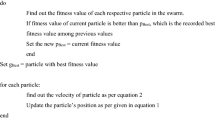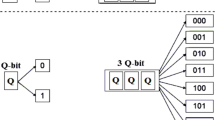Abstract
Dense network deployment is now being evaluated as one of the viable solutions to meet the capacity and connectivity requirements of the fifth-generation (5G) cellular system. The goal of 5G cellular networks is to offer clients with faster download speeds, lower latency, more dependability, broader network capacities, more accessibility, and a seamless client experience. However, one of the many obstacles that will need to be overcome in the 5G era is the issue of energy usage. For energy efficiency in 5G cellular networks, researchers have been studying at the sleeping strategy of base stations. In this regard, this study models a 5G BS as an \(M^{[X]}/G/1\) feedback retrial queue with a sleeping strategy to reduce average power consumption and conserve power in 5G mobile networks. The probability-generating functions and steady-state probabilities for various BS states were computed employing the supplementary variable approach. In addition, an extensive palette of performance metrics have been determined. Then, with the aid of graphs and tables, the resulting metrics are conceptualized and verified. Further, this research is accelerated in order to bring about the best possible (optimal) cost for the system by adopting a range of optimization approaches namely particle swarm optimization, artificial bee colony and genetic algorithm.


















Similar content being viewed by others
Data availability
Not applicable.
References
Arqub, O. A., & Al-Smadi, M. (2020). Fuzzy conformable fractional differential equations: novel extended approach and new numerical solutions. Soft Computing, 24(16), 12501–12522. https://doi.org/10.1007/s00500-020-04687-0
Ayyappan, G., & Nirmala, M. (2020). An \(M^{[X]}/G (a, b)/1\) queue with unreliable server, second optional service, closedown, setup with N-policy and multiple vacation. International Journal of Operational Research, 16(1), 53–81. https://doi.org/10.1504/IJMOR.2020.104686
Ayyappan, G., & Nirmala, M. (2021). Analysis of customer’s impatience on bulk service queueing system with unreliable server, setup time and two types of multiple vacations. International Journal of Industrial and Systems Engineering, 38(2), 198–222. https://doi.org/10.1504/IJISE.2021.115321
Bremermann, H. J. (1985). The evolution of intelligence: the nervous system as a model of its environment. Seattle: Department of Mathematics: University of Washington.
Chih-Lin, I., Han, S., & Bian, S. (2020). Energy-efficient 5G for a greener future. Nature Electronics, 3(4), 182–184. https://doi.org/10.1038/s41928-020-0404-1
CK, D. M., & Haridass, M. (2023). Analysis of multiple sleeps and N-policy on a M/G/1/K user request queue in 5g networks base station. The Scientific Temper, 14(02), 375–382. https://doi.org/10.58414/SCIENTIFICTEMPER.2023.14.2.21
Ck, D. M., Selvamuthu, D., & Kalita, P. (2023). Energy Efficiency in a Base Station of 5G Cellular Networks using \(M/G/1\) Queue with Multiple Sleeps and N-Policy. Methodology and Computing in Applied Probability, 25(2), 48. https://doi.org/10.1007/s11009-023-10026-1
Deepa, V., & Haridass, M. (2023). Simulation Analysis of a Base Station Using Finite Buffer M/G/1 Queueing System with Variant Sleeps. Methodology and Computing in Applied Probability, 25(4), 80. https://doi.org/10.1007/s11009-023-10052-z
Deepa, V., Haridass, M., Selvamuthu, D., & Kalita, P. (2023). Analysis of energy efficiency of small cell base station in 4G/5G networks. Telecommunication Systems, 82(3), 381–401. https://doi.org/10.1007/s11235-022-00987-y
Falin, G. I., & Templeton, J. G. C. (1997). Retrial queues. London: Chapman & Hall.
Holland, J. H. (1975). Adaptation in natural and artificial systems (pp. 390–401). Ann Arbor: University of Michigan Press.
Haridass, M., & Arumuganathan, R. (2015). Analysis of a single server batch arrival retrial queueing system with modified vacations and N-policy. RAIRO-Operations Research, 49(2), 279–296. https://doi.org/10.1051/ro/2014037
Hawasli, M., & Çolak, S. A. (2017). Toward green 5G heterogeneous small-cell networks: power optimization using load balancing technique. AEU-International Journal of Electronics and Communications, 82, 474–485. https://doi.org/10.1016/j.aeue.2017.09.012
Holtkamp, H., Auer, G., Bazzi, S., & Haas, H. (2014). Minimizing base station power consumption. IEEE Journal on Selected Areas in Communications, 32(2), 297–306. https://doi.org/10.1109/JSAC.2014.141210
Jain, M., & Bhargava, C. (2008). Bulk arrival retrial queue with unreliable server and priority subscribers. International Journal of Operations Research, 5(4), 242–259.
Jain, M., & Upadhyaya, S. (2012). Optimal repairable \(M^{[X]}/G/1\) queue with Bernoulli feedback and setup. International Journal of Mathematics in Operational Research, 4(6), 679–702. https://doi.org/10.1051/ro/2020074
Jain, M., & Kaur, S. (2021). Bernoulli vacation model for \(M^{[X]}/G/1\) unreliable server retrial queue with bernoulli feedback, balking and optional service. RAIRO-Operations Research, 55, S2027–S2053. https://doi.org/10.1051/ro/2020074
Jain, M., & Kumar, A. (2022). Unreliable Server \(M^{[X]}/G/1\) Retrial Feedback Queue with Balking, Working Vacation and Vacation Interruption. Proceedings of the National Academy of Sciences, India Section A: Physical Sciences, 93(1), 57–73. https://doi.org/10.1007/s40010-022-00777-w
Kalita, P., & Selvamuthu, D. (2023). Stochastic modelling of sleeping strategy in 5G base station for energy efficiency. Telecommunication Systems, 83(2), 115–133. https://doi.org/10.1007/s11235-023-01001-9
Karaboga, D., & Basturk, B. (2007). A powerful and efficient algorithm for numerical function optimization: artificial bee colony (ABC) algorithm. Journal of Global Optimization, 39(3), 459–471. https://doi.org/10.1007/s10898-007-9149-x
Kennedy, J., & Eberhart, R. (1995). Particle swarm optimization, Proceedings of ICNN’95. International Conference on Neural Networks, Perth, WA, Australia, 4, 1942–1948. https://doi.org/10.1109/ICNN.1995.488968.
Krishna Reddy, G. V., Nadarajan, R., & Arumuganathan, R. (1998). Analysis of a bulk queue with N-policy multiple vacations and setup times. Computers & Operations Research, 25(11), 957–967. https://doi.org/10.1016/S0305-0548(97)00098-1
Kumar, A., & Jain, M. (2023). Cost Optimization of an Unreliable server queue with two stage service process under hybrid vacation policy. Mathematics and Computers in Simulation, 204, 259–281. https://doi.org/10.1016/j.matcom.2022.08.007
Liu, C., Natarajan, B., & Xia, H. (2015). Small cell base station sleep strategies for energy efficiency. IEEE Transactions on Vehicular Technology, 65(3), 1652–1661. https://doi.org/10.1109/TVT.2015.2413382
López-Pérez, D., Domenico, A.D., Piovesan, N., Baohongqiang, H., Xinli, G., Bao, H., Qitao, S., & Debbah, M. (2022). A survey on 5G energy efficiency: massive MIMO, lean carrier design, sleep modes, and machine learning. arXiv preprint, arXiv:2101.11246.
Malik, G., Upadhyaya, S., & Sharma, R. (2012). Cost inspection of a \(Geo/G/1\) retrial model using particle swarm optimization and Genetic algorithm. Ain Shams Engineering Journal, 12(2), 2241–2254. https://doi.org/10.1016/j.asej.2020.11.012
Ma, Z., Guo, S., & Wang, R. (2023). The virtual machines scheduling strategy based on M/M/c queueing model with vacation. Future Generation Computer Systems, 138, 43–51. https://doi.org/10.1016/j.future.2022.08.001
Niu, Z., Guo, X., Zhou, S., & Kumar, P. R. (2015). Characterizing energy-delay tradeoff in hyper-cellular networks with base station sleeping control. IEEE Journal on Selected Areas in Communications, 33(4), 641–650. https://doi.org/10.1109/JSAC.2015.2393494
Pakes, A. G. (1969). Some conditions for Ergodicity and recurrence of Markov chains. Operations Research, 17, 1058–1061. https://doi.org/10.1287/opre.17.6.1058
Salahdine, F., Opadere, J., Liu, Q., Han, T., Zhang, N., & Wu, S. (2021). A survey on sleep mode techniques for ultra-dense networks in 5G and beyond. Computer Networks, 201, 108567. https://doi.org/10.1016/j.comnet.2021.108567
Sennott, L. I., Humblet, P. A., & Tweedi, R. L. (1983). Average drifts and the non-Ergodicity of Markov chains. Operations Research, 31, 783–789. https://doi.org/10.1287/opre.31.4.783
Shortle, J. F., Thompson, J. M., Gross, D., & Harris, C. M. (2018). Fundamentals of queueing theory (p. 399). John Wiley & Sons.
Upadhyaya, S. (2020). Cost optimization of a discrete-time retrial queue with Bernoulli feedback and starting failure. International Journal of Industrial and Systems Engineering, 36, 165–196. https://doi.org/10.1504/IJISE.2020.110245
Vaishnawi, M., Upadhyaya, S., & Kulshrestha, R. (2022). Optimal Cost Analysis for Discrete-Time Recurrent Queue with Bernoulli Feedback and Emergency Vacation. International Journal of Applied and Computational Mathematics, 8(5), 254. https://doi.org/10.1007/s40819-022-01445-8
Woon, L. J., Ramasamy, G., & Thiagarajah, S. P. (2021). Peak power shaving in hybrid power supplied 5G base station. Bulletin of Electrical Engineering and Informatics, 10(1), 62–69. https://doi.org/10.11591/eei.v10i1.2705
Yang, J., Zhang, X., & Wang, W. (2016). Two-stage base station sleeping scheme for green cellular networks. Journal of Communications and Networks, 18(4), 600–609. https://doi.org/10.1109/JCN.2016.000083
Zebari, G. M., Zebari, D. A., & Al-zebari, A. (2021). Fundamentals of 5G cellular networks: A review. Journal of Information Technology and Informatics, 1(1), 1–5.
Zhang, H., Liu, H., Cheng, J., & Leung, V. C. (2017). Downlink energy efficiency of power allocation and wireless backhaul bandwidth allocation in heterogeneous small cell networks. IEEE Transactions on Communications, 66(4), 1705–1716. https://doi.org/10.1109/TCOMM.2017.2763623
Acknowledgements
Not applicable.
Funding
The authors declare that no funds, grants, or other support were received during the preparation of this manuscript.
Author information
Authors and Affiliations
Contributions
All the authors made substantial contributions to the conception and design of the model. Conception, drafting the manuscript, revision and proofreading was done by K. Indhira. Designing, analysis and interpretation of the model was carried out by R. Harini. All authors read and approved the final manuscript
Corresponding author
Ethics declarations
Conflict of interest
The authors have no relevant financial or non-financial interests to disclose.
Additional information
Publisher's Note
Springer Nature remains neutral with regard to jurisdictional claims in published maps and institutional affiliations.
Appendices
Appendix A
In the case where \(\rho < 1\), the embedded Markov chain (MC) \(\{F_n;n\in N\}\) can be said to be ergodic, where \(\rho = {\mathcal {E}}(X_1)[1-{\mathcal {Q}}^*(\nu )]+r-\nu {\mathcal {E}}(X_1)[1+\eta {\mathcal {E}}(S^1)]{\mathcal {E}}(L^1) \)
Proof
It is straightforward to verify that ergodicity is a sufficient condition by applying Foster’s criteria [29], which points out that the chain might be irreducible and aperiodic. If a non-negative fn. c(d), \(d\in N\) and \(\epsilon >0,\) exists that guarantees that the mean drift \(\varsigma _d=H[c(f_ {n+1})-c(f_n)/f_n=d]\) is limited for all \(d\in N\) and \(d\in N\) and \(\varsigma _d \le -\epsilon \), excluding possibly for a finite no. of \(d'\)s, then the MC is ergodic. When considering the function \(c(d)=d\) in our scenario, we get
It is clear that ergodicity must exist in order for the inequality below to exist.
If the MC \(\{F_ n;n\epsilon N\}\) meets Kaplan’s criterion, we may easily ensure non-ergodicity in accordance with Sennott et al. [31] particularly \(\varsigma _d<\infty \) for all \(d\ge 0\) and \(\exists \) \(d_0\in N\) s.t \(\varsigma _d \ge 0\) for \(d\ge d_ 0\). The fact that “Kaplan’s condition”is met in our scenario is underscored by the existence of a w such that \(g_{ld}= 0\) for \(d<l-m\) and \(l>0\), in which \(g_{ld}\) is the one-step transition matrix of \(\{F_n;n\in N\}\). Consequently, it is indicated that the MC is non-ergodic by
\(\square \)
Appendix B
By substituting the eqns. (35), (36) and (33) in (26) and performing some calculations, we eventually arrive at,

Here, by substituting the eqns. (35) to (39) into the eqns. (27) to (31), we get,





Appendix C
Rights and permissions
Springer Nature or its licensor (e.g. a society or other partner) holds exclusive rights to this article under a publishing agreement with the author(s) or other rightsholder(s); author self-archiving of the accepted manuscript version of this article is solely governed by the terms of such publishing agreement and applicable law.
About this article
Cite this article
Harini, R., Indhira, K. Dynamical modelling and cost optimization of a 5G base station for energy conservation using feedback retrial queue with sleeping strategy. Telecommun Syst (2024). https://doi.org/10.1007/s11235-024-01155-0
Accepted:
Published:
DOI: https://doi.org/10.1007/s11235-024-01155-0




